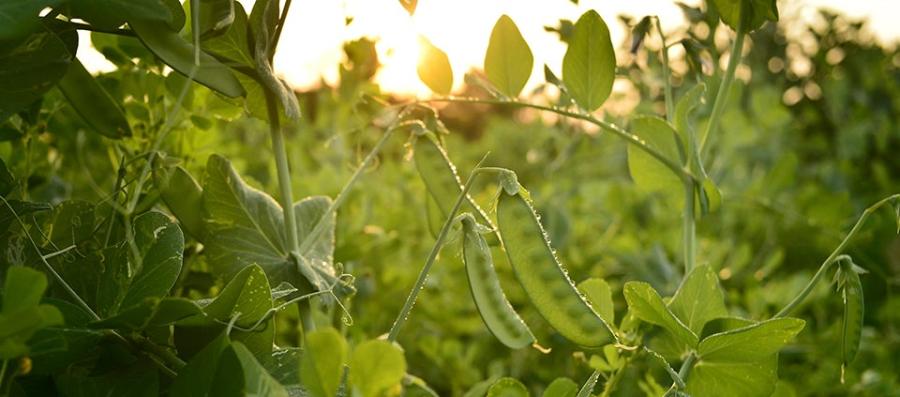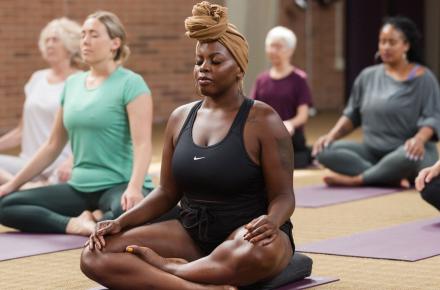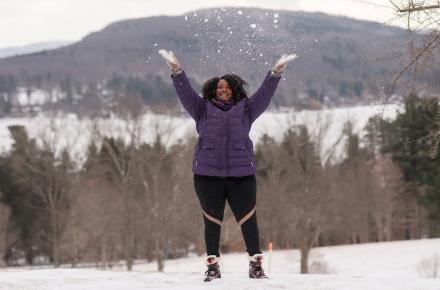The Miracle of Snow Peas


My husband, Rick, and I have planted a vegetable garden each of the 10 years we’ve lived on our rural Virginia property. Mostly we do it because it’s fun, and the gift of watching plants go through their growing season is one we never tire of, but we also like that growing fresh veggies ourselves is a small step we can take toward making the world a more sustainable place.
The earth was just emerging from her long winter freeze when Rick went out to plant the first of this year’s snow peas. He staked a length of heavy metal fencing so the peas would have a solid trellis, then poked seeds into the cold dirt. A little over a week later, green sprouts pushed up out of the raised bed. It was still chilly, a March day in the Shenandoah Valley when the wind blew in fitful gusts and only those tender shoots and the daffodils waving in the flower garden spoke clearly of spring’s promise.
The small plants grew quickly, the first two leaves multiplying until the stems nearly reached the lowest rung of the fence. That’s when the miracle happened: each plant sent out a tendril, the tiniest curl of plant matter, a finger reaching up and out, seeking something to twine around. For a day or two, those tendrils waved uselessly, but the next time I went to the garden, one green tendril had discovered the nearest metal wire and wrapped itself around it like a tiny, coiled spring. “Look!” I said to Rick, pointing. “The first one found the fence!”
One by one, all the plants grabbed onto the wire, except for a couple of renegades determined to do their own thing. Although I tried to coax their tendrils in the right direction, they wrapped around themselves or reached out toward the radish plants and arugula we’d planted once the weather warmed. A bit unconventional myself, I laughed at their offbeat growing methods.
Resting my head on Rick’s shoulder one evening, I contemplated how natural it was to lean into something solid. Strong as I may be alone, I’m stronger when I have the human equivalent of the pea’s wire trellis—family, friends, colleagues, sangha—a community to help me reach higher than I could with nothing sturdy to hold onto.
During the next few weeks, the peas visibly grew, especially on sunny days when the asparagus in the nearby bed shot up three inches between breakfast and supper. When the peas reached shoulder height, I spotted the first white flowers, delicate blossoms emerging from a tight whorl of leaves.
In a day or two, the petals shriveled to reveal an infant pea, jade green and small as the nail on my little finger. The first one I saw danced with the breeze that blew a shower of spent choke cherry petals into the garden. I salivated, thinking of snow peas with salad greens, snow peas in a stir fry paired with fresh asparagus. But the peas still had days of fattening up to do, so I let them be and went back to weeding.
As the days went by, the plants grew taller, overtopping the wire trellis by more than a foot. I marveled at the dynamic tension between the need to hold tight to something solid and the desire to reach beyond the limits of any framework or construct. Like the snow peas, I need safe and familiar surroundings to put down roots. Only then can I leaf out and climb higher, eventually outgrowing the confines of the known.
The journey isn’t always easy. A violent thunderstorm blew in from the west with winds that shook the house and drove the rain in slanted sheets across the yard. When the downpour finally stopped, I found that many of the pea plants had been blown down, their tightly wrapped tendrils simply not strong enough to hold them upright against the gusts.
Apparently, the peas neither expected nor required perfect growing conditions. Even though their stems were bowed to the ground, they grew fatter by the day, and the plants continued to flower. I pondered my desire to have all my ducks in a row, everything just so before I’d try something new or take a big step forward in my life. I had something to learn from these resilient snow peas that doubled in size in the days after the windstorm.
Finally, it was time. I picked the first pea, whispering a quick prayer of thanks to the plant as my thumb snapped the neck of the pea from its stem. Because snow peas hide, their color exactly matching the leafy backdrop, I slowly circled the raised bed twice and kept discovering more peas. The edible pods were smooth against my cupped hand, thick with the swelling peas inside them.
The lesson I took from the peas had slowly come clear; it had to do with viewing optimal life circumstances as a privilege, not an entitlement. That idea helped reduce the sting when the economic firestorm of the last few years resulted in my being laid off from a job I loved. It even made my next migraine a bit more bearable because I stopped fighting against the fact that it was happening. Like the peas, I just keep growing.
I closed the garden gate behind me and tenderly carried the peas to the kitchen. Rinsing them off, I considered the wonder it is to mature into the full expression of what’s possible. Snow pea or human, the road from germination to harvest is a long one, beset with difficulties, yet well worth the cultivation. Later, just before biting appreciatively into those first green morsels, I prayed that I, too, might reach the ripe peak of my own unfolding.
© Kripalu Center for Yoga & Health. All rights reserved. To request permission to reprint, please e-mail editor@kripalu.org.













































